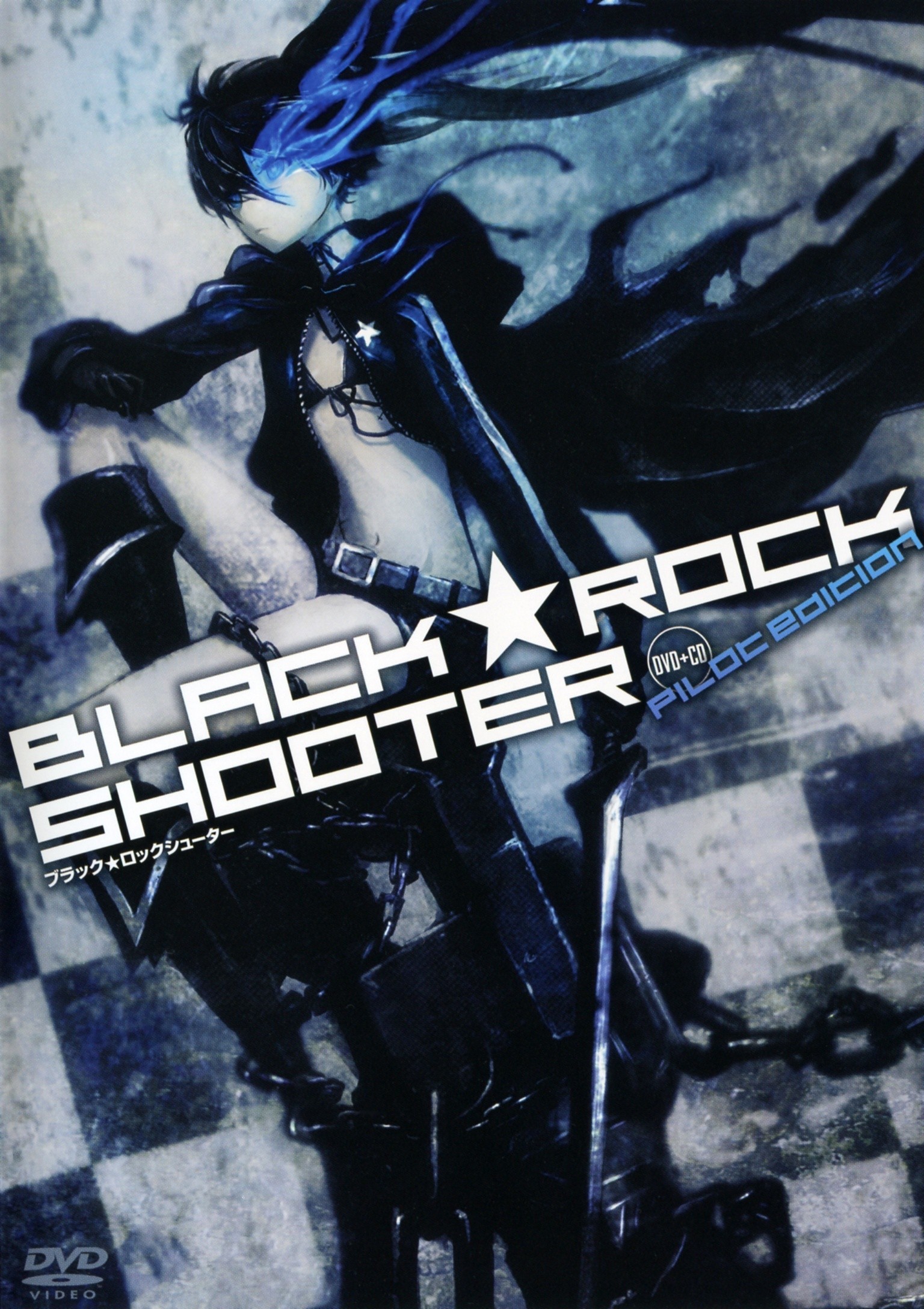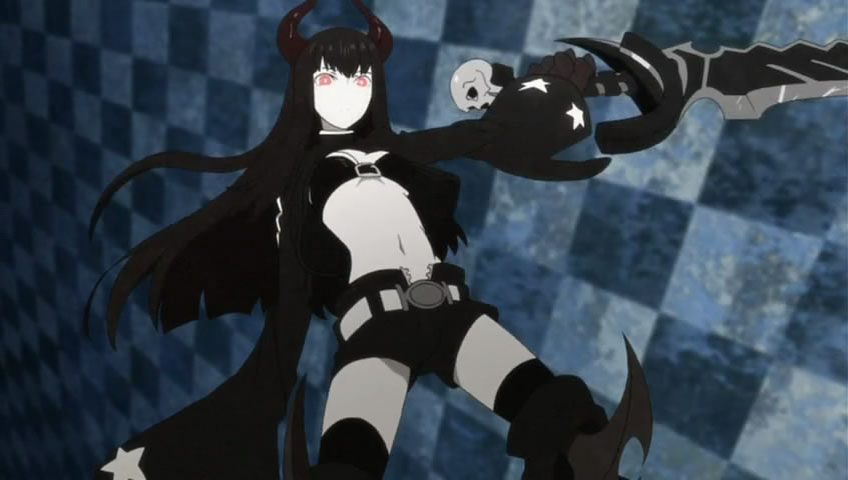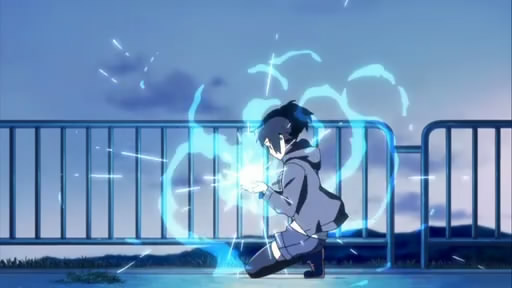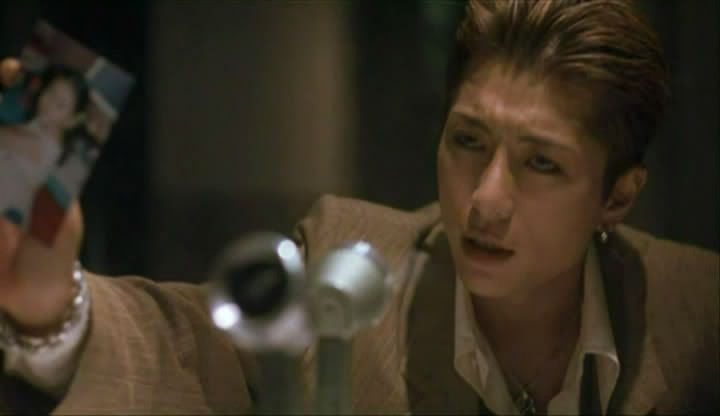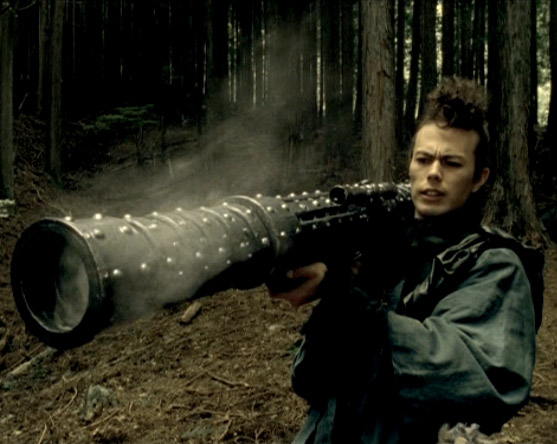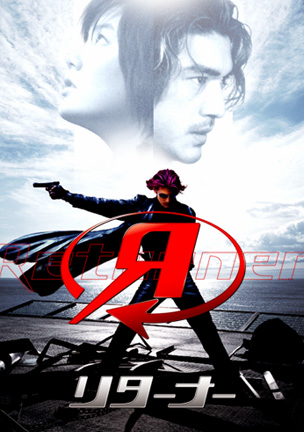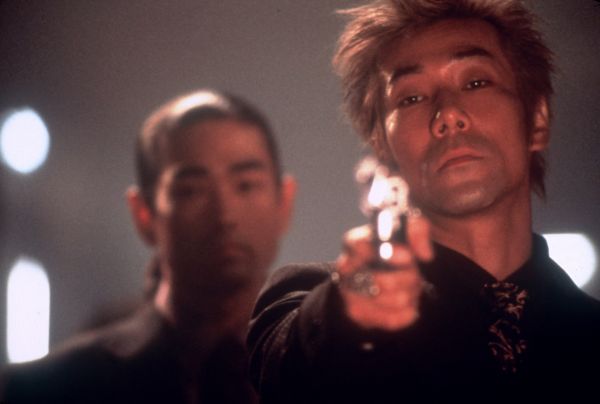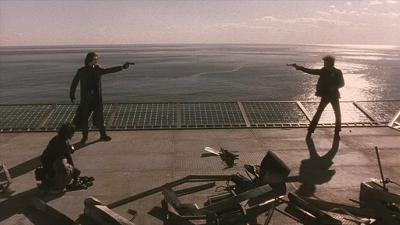Heroic Spirits from every age are summoned to Japan by magi who participate in a modern day war for the Holy Grail. Legend claims that the Holy Grail has the power to grant any wish a person may desire; whether it's conquering the world or even changing the course of history. This is the story of Emiya Shirou, a typical high school student who is pulled into a war the likes of which few have ever seen. The battle for the Holy Grail will force Emiya to come into conflict with supernatural enemies, the longings of his heart, and the very personification of all his beliefs. The plot is relatively the same as the anime, video games, and novel. That being said not only is the story top notch but Type Moon has seen fit to introduce new elements into the foray, elements that make Unlimited Blade Works seem like a brand new creation even if you're already familiar with Fate/Stay: Night.
Unlimited Blade Works retains the essence of the basic formula of the series but places a greater emphasis on the duality between our main character Emiya Shirou and the Heroic Spirit Archer. Rather than have Shirou as the main actor on this stage, the screen time is largely split between Emiya and Archer. In this movie we see Shriou's beliefs tested by the events surrounding him and questioned by Archer. Shirou believes that he can save everyone and he will put his life on the line without hesitation to prove it. Archer on the other hand believes that it is impossible to save everyone because life is never that simple and there is no such thing as a hero. These and other ideologies shared and contrasted between the two, forces them to re-evaluate their own beliefs and even how those beliefs affect their personal realities.
The presentation is not entirely flawless. If you've seen Fate/Stay Night you will immediately notice something amiss when you watch Unlimited Blade Works; pacing. For the first 20 to 30 minutes of the movie, Unlimited Blade Works is all over the place. At the risk of spoiling anything let me give you the bare bones. The movie opens up with Tohsaka Rin summoning Archer just like in the anime. The scene then jumps to Archer and Lancer fighting. Then the scene jumps to Emiya getting injured and Tohsaka saving him. Then the scene jumps to Lancer attacking Emiya again. Then out of nowhere Saber shows up and then we're suddenly outside the church. What's even more jarring is that there are no transitions between any of these scenes. It just jumps from one clip to another. With that said, long-time fans of the series should have an easy time keeping track of the movie but it may be tougher for newcomers in the early going.
It should be noted that once the pacing catches up with plot, the anime is brilliant. The events in the movie play out in a way you wouldn't expect and there are plenty of twists to keep you guessing. Still, if you're not at all familiar with the Nasuverse, you may wish to watch the Fate/Stay Night series to get the most out of the movie, but there's no real need to get that heavily involved if you're just looking for a good watch.
Where animation is concerned, Studio Deen went all out. Watching Unlimited Blade Works is like watching an animated painting. The clothing and hair on the characters move with life-like fluidity, much like the characters themselves. Even with regards to the fight scenes, the artists and animators really take animated battles to another level. The speed at which these blows are struck and the rapid pace of the fight scenes are impressive, especially because there is no animation slow-down nor any drop in quality. In Unlimited Blade Works every scene is stunning.
However, I do have two minor gripes. The environments, while beautifully drawn could have used more detail. If we look at Einsbren Manor, it's an impressive spectacle: we see rubble left over from battles, destroyed banisters, torn curtains, light streaming in through broken windows, etcetera, but no other environment is this detailed so while the anime is gorgeous some might wonder why aren't all the environments as detailed as they could have been. In any case the anime is definitely a feast for the eyes. It's no Vampire Hunter D: Bloodlust but it's very good.
Fans might be disappointed that Type Moon doesn't spend much time shipping ShirouxSaber but given that some 20 episodes of the anime did that already I think a change of pace is fine to say the least, so this time around the movie spends a fair amount of time building the relationship between Shirou and Rin. This works really well because the two characters have viewpoints that are diametrically opposed to the other and this provides an ideological dichotomy between the two which is not compromised by differences but enhanced by them. For example, Shirou clearly has a savior complex which almost seems to stem from a reaction to childhood trauma. Rin drags these issues out into the open and which makes Shirou re-evaluate himself and his life. A very believable undercurrent of affection flows beneath the surface of Shirou's and Rin's relationship. What is great about this is that even though the movie is very fast paced, this relationship doesn't feel underdeveloped. Despite knowing the ins and outs of this relationship courtesy of previous series and all its scenarios, I found myself riveted by the growing bond between Shirou and Rin.
Also of note is the animosity between Shirou and Archer that is always there in the background during their interactions. During the anime, there was always venom between the two due to their different beliefs. In Unlimited Blade Works, the tension between the two explodes in no fewer than two violent confrontations between the pair. These fights are interesting because Shirou and Archer aren't operating within the confines of a good versus evil dynamic per se. Instead both characters are dealing with a reality they refuse to accept.
Music is perhaps the only area where Unlimited Blade Works fumbles and never recovers. Anyone who has seen Fate/Stay Night is probably familiar with the ambient music that sets the tone for suspense in many of the scenes as well as the pulse pounding tempos throughout the battles. Here that isn't the case. The opening does have its fair share of drums and chanting that set the tone for the movie but the score isn't exactly epic. It's not bad but it's subpar compared to the scores used in the series.
As an aside where the fight scenes are concerned, it's a given that Saber knows how to lay the smackdown, but long-time fans will appreciate the fact that Rin has stepped her game up. Nothing this reviewer likes more than strong independent females so while it's expected that a hero like Saber can bring the hurt, it's more impressive to see such power come from Rin who is mortal and thus normal by comparison. Also, despite the dark tone, there is some humor here. When Assassin fought Saber he had this to say, "I thought she was a beautiful little flower but she turned out to be a ferocious lion." Apparently Assassin's talent for analyzing women hasn't improved since the anime. In the series, Shirou was both the leading male and the damsel in distress. In Unlimited Blade Works, it seems that Shirou went to the school for Badass Normals and graduated valedictorian.
Unlimited Blade Works is a very good animated movie. While fans of Type Moon will likely receive the film with a high level of esteem, I can also recommend it for fans of anime in general even if they aren't familiar with the Nasuverse. Sure the movie has it's weaknesses in areas of pacing and the score, but it's a very enjoyable anime to watch. When it comes to Type Moon you'd better believe the hype.
I am the bone of my sword
Steel is my body and fire is my blood
I have created over a thousand blades
Unknown to death
Nor known to life
I have withstood pain to create many weapons
Yet these hands will never hold anything
So as I pray
Unlimited Blade Works























